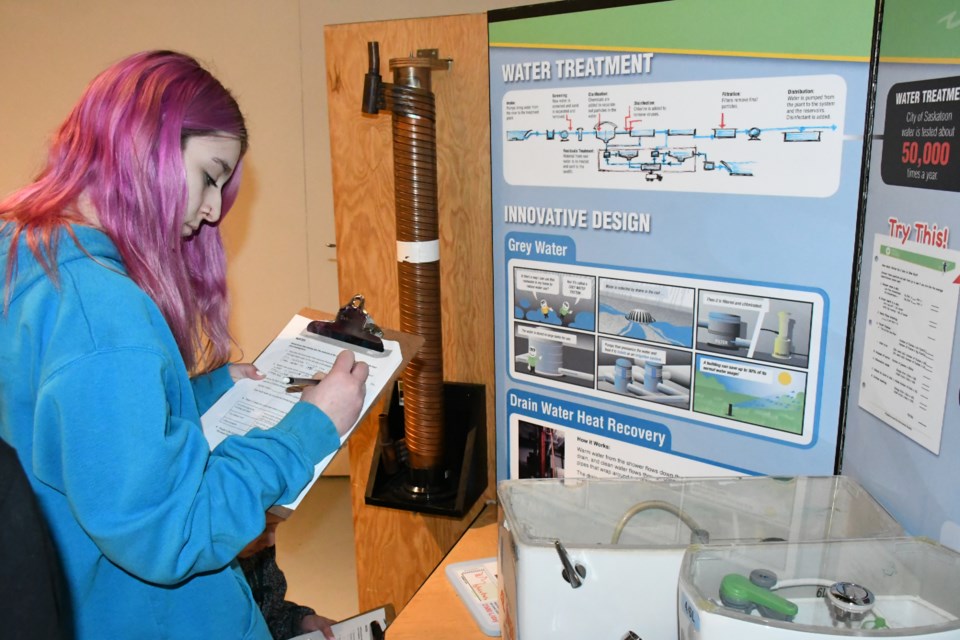A visit to the Western Development Museum (WDM) helped elementary school students learn more about what goes into making buildings energy efficient and the materials residents used to stay warm decades ago.
About 60 students in grades 7 and 8 from École Connaught Community School in Regina participated in the 10th annual Smarter Science Better Buildings event at the WDM on March 14.
The youths answered questions related to six interactive displays about energy efficiency in today’s buildings, such as building materials, retrofits, solar, water, a net-zero home and lighting and appliances.
They also visited the galleries to find answers to energy-related questions about the railway station, a coal truck, the museum’s exterior doors, the auto repair building, the coal oil delivery wagon, a 1929 streetcar, a 1951 trolley coach and a weather module.
The students’ workbooks also featured facts about the types of furnaces used since 1880 and their respective energy efficiency.
A wood stove from 1880 to 1910 was less than 30 per cent efficient, a coal-fired furnace from 1920-40 was 30- to 40-per-cent efficient, an oil or natural gas furnace from 1950-70 was 90-per-cent efficient, while an Energy Star natural gas furnace since 2010 is 95- to 98-per-cent efficient.
Grade 8 student Walker Duncan thought the museum was “a really cool place” and enjoyed seeing all the vintage vehicles and planes, along with how the exhibits are displayed. He also found it interesting to learn about the old materials — wood and straw — that pioneers used to construct buildings and the sources of power — such as coal — they used.
Duncan was also surprised by how old some of the artifacts were.
“I didn’t know all of those things could be in one place. So I was looking at them and I was like, ‘Dang, how far ago was this?’ And it’s like, a hundred years! (So) yeah, that’s a lot,” he said.
Duncan added that it has been interesting to learn how people keep their homes warm in the winter, such as by using triple-paned windows to conserve energy.
Answering questions about the six interactive displays excited and interested Grade 8 student Nova Fenrick. She especially enjoyed the display about lighting and appliances because she learned how lightbulbs have evolved over the years.
Being hands-on helped her learn more since she could touch the exhibits and move items around to understand them better.
“We were doing a lot of science (about) this in school, so we were prepared for this,” Fenrick added.
Kyle DuMont, a grade 7/8 teacher at Connaught, brought his class because he wanted to give his pupils the opportunity to be more hands-on with their science education, something that’s difficult to do with the current unit and lessons.
Specifically, bringing various building materials — such as laminate, insulation, and solar panels — into class and then storing them afterward isn’t easy. He joked that he could show only so many YouTube-related videos before the pupils lost interest.
“It’s just giving us the opportunity to show the kids that experiential learning around all of the heat and temperature concepts we go through in the unit,” Dumont said. “And, just get out of the building and show the kids a fun day, too.”
He added that the displays were well-researched and well-done, while the infographics were easy to read and kept the students engaged.




